Les Colombières: Ferdinand Bac’s house-and-garden masterpiece on the Riviera
A century after its seven-year creation by the artist Ferdinand Bac, the magnificent cliff-top garden of Les Colombières — at Menton in France's Alpes-Maritimes department — has been brilliantly restored, says Kathryn Bradley-Hole. Pictures by Will Pryce for Country Life.
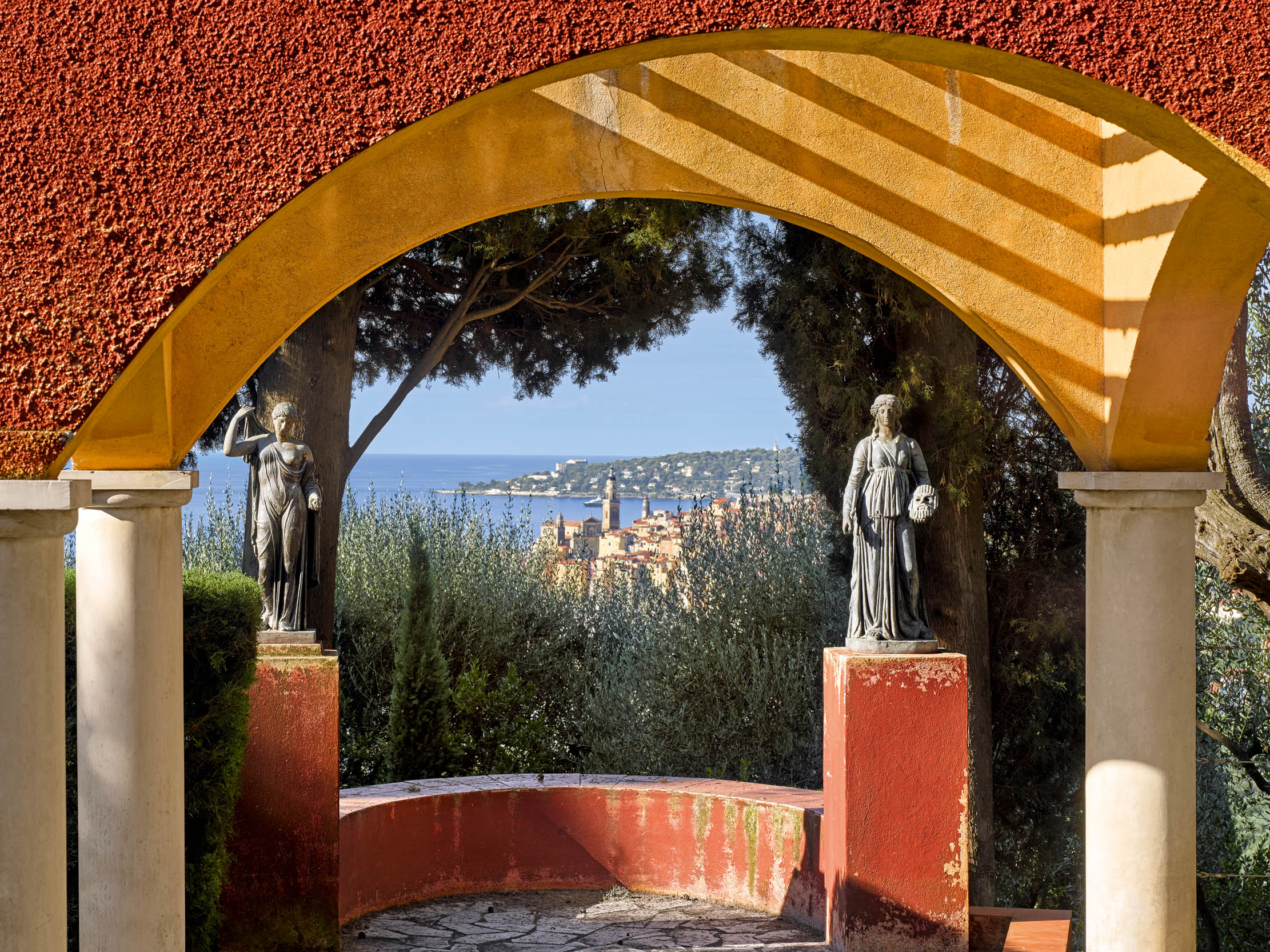

Ah, the French Riviera. Fabled place where fragrant pines and silvery olive trees bask on rocky hillsides, tumbling all the way down to the sea. This fortunate corner of the Mediterranean coast looks southwards into the shimmering blue waters that long ago earned it the sobriquet Côte d’Azur.
Since the railways reached the south in the 1860s, people from cooler, northern climates have been drawn to the Riviera. Initially, they came only for winter sojourns, to escape cold, foggy air and the dangers of tuberculosis. The clean, pine-scented air of the south and the prospect of sunny days followed by casino nights had compelling allure for the beau monde of the Belle Époque. Royal patronage, via Queen Victoria from the 1880s, sealed the Riviera’s fashionable status and low prices for land in the early days created a property boom for new villas set in luxuriant gardens, amid ancient pine woods and olive groves.
In the decades on either side of the First World War, it is difficult to overstate the parallel importance of garden-making in this region. To name only a few of the greats: from 1905, Charlotte de Rothschild turned 17 acres of prime hilltop real estate on the spine of Cap Ferrat into a series of remarkable themed gardens at Villa Île-de-France (now known as Villa Ephrussi de Rothschild).
At the same moment, the great plantswoman and sponsor of botanical exploration Ellen Willmott was pouring much of her considerable fortune into Villa Boccanegra, near Menton and the Italian border. From 1922, the former Duchess of Marlborough, Consuelo Vanderbilt Balsan, compared her gardens, arranged in terraces and stairways on the steep slopes of a hillside at Èze, east of Nice, to the Hanging Gardens of Babylon. And, every November from 1924, Lawrence Johnston left behind the icy, wind-blasted north Cotswolds and his wondrous garden at Hidcote Manor to cultivate a range of more tender plants at his beloved villa, Serre de la Madone, in the hills behind Menton.
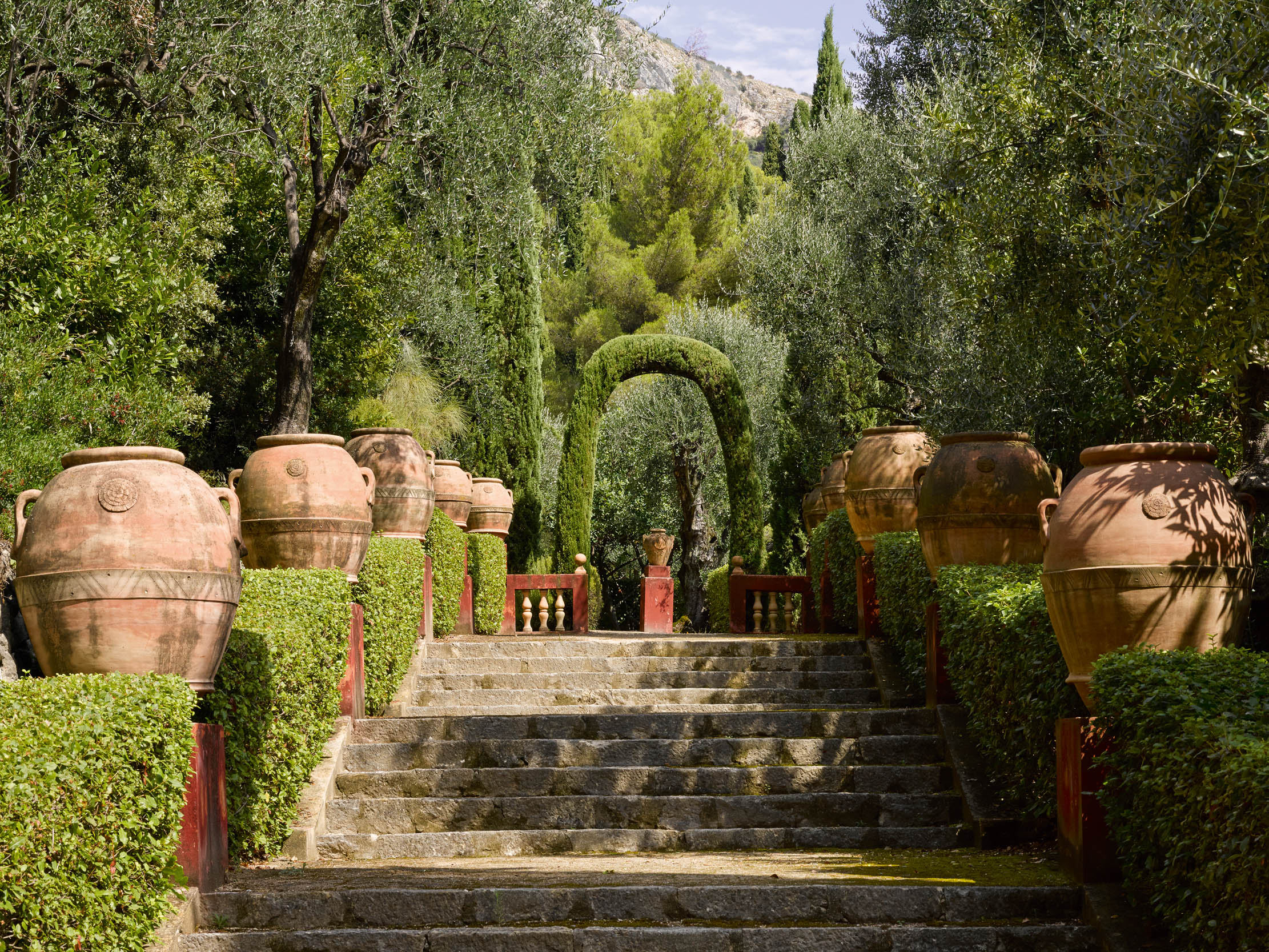
Menton was (and is) especially favoured by the English, but they were by no means the only makers of great gardens in this period. In 1919, Emile and Caroline Ladan-Bokairy of Compiègne, in northern France, asked a friend of theirs, the Franco-German illustrator, designer and writer Ferdinand Bac (1859– 1952), to find them a winter home in the south. He acquired for them something with enormous potential: a two-storey, simple, 18th-century farmhouse set in some seven hectares (a little more than 17 acres) of olive orchards, cliffs and ravines, high on a south-west-facing hill at Garavan, overlooking Menton’s picturesque old town and sheltered harbour.
Bac was given full rein by the Ladan-Bokairys to remodel the little house into a large and elegant neo-Classical villa and create gardens out of the orchards of olives. Almost immediately, he became resident architect, decorator and landscaper, from 1920 living on site as the house was remodelled, enlarged and personally decorated by him. Bac covered every interior wall with imagined scenes suggestive of theatrical sets, many with Mediterranean landscape themes or references to classical mythology. Homer’s Garden, a suntrap courtyard designed as a Roman peristyle at the west end of the house, is decorated with scenes from The Odyssey on its enclosing walls.

For the main garden, Bac worked in harmony with the uneven gradients of the land, making use of the characterful old olives and pines, which lend a veil of mystery and flickering light and shade. To these he added slender Italian cypresses that, in their maturity, create focused views and dark exclamation marks in the landscape, as well as increasing the sense of enclosure. He put in hedge-lined paths and stairways that are not always connected, but which suggest routes that will gradually take you up the hill and eastwards, eventually along a spectacular cliffside path known as Orpheus’s Walk. A recommended itinerary will take you around the property via some 25 different landmarks — sculptures, loggias, clearings with keyhole sea views and even a mausoleum. Echoing the house, landmarks allude to ancient history and mythology.
Exquisite houses, the beauty of Nature, and how to get the most from your life, straight to your inbox.
One such highlight, close to the house, is the Jardin de l’Obelisque, where a circular lawn surrounds a pond planted with lotus flowers, Nelumbo nucifera, from the centre of which rises a stone obelisk. The prospect takes in glorious views of the sea and old Menton.
You can head northwards from the obelisk, up a brick stairway between dark cypresses to reach an elegant classical loggia, framing a glorious sea view. Or go westwards, along a straight pergola walk, to reach the garden’s most ancient feature, a rangy old carob tree, perhaps as much as 1,000 years old. Stooping and hollow, with no heartwood left, but valiantly sending up new shoots and branches on its perimeter, this tree was a venerable old monster when Bac painted it, in 1925.
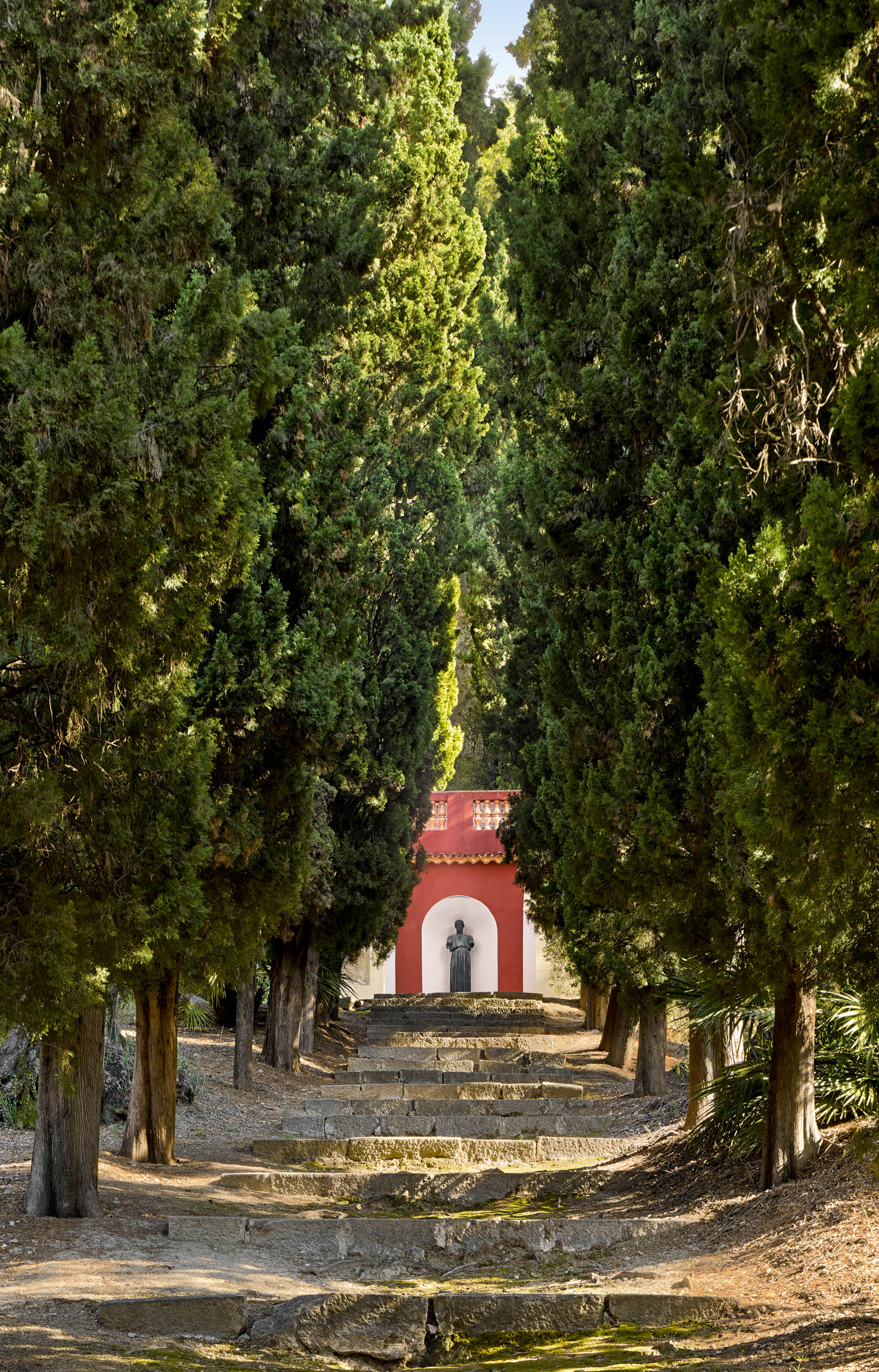
This is the far west end of the garden, but an easy stairway between large, paired terracotta jars and a continuing path lead back to its heart and the main axis, a magnificent long avenue of cypresses running north/south, which cuts the garden into two convenient halves: the west side containing the villa and the more cultivated garden, with its evergreen hedges of Viburnum tinus and Pittosporum tobira, its ornaments and buildings. The east side is more wild and rocky, but also botanically more diverse.
That we can see any of this now, 100 years after Bac created it all, is remarkable. With the completion of house and garden by 1924–25, Bac stayed on at Les Colombières and, in fact, the Ladan-Bokairys and Ferdinand Bac lived, all three together, for the rest of their long lives. Through the 1920s and 1930s, they resided much of the time at Les Colombières, which was famous among their set and much visited. But with the onset of the Second World War and Italy’s capture of Menton, they left and did not return.
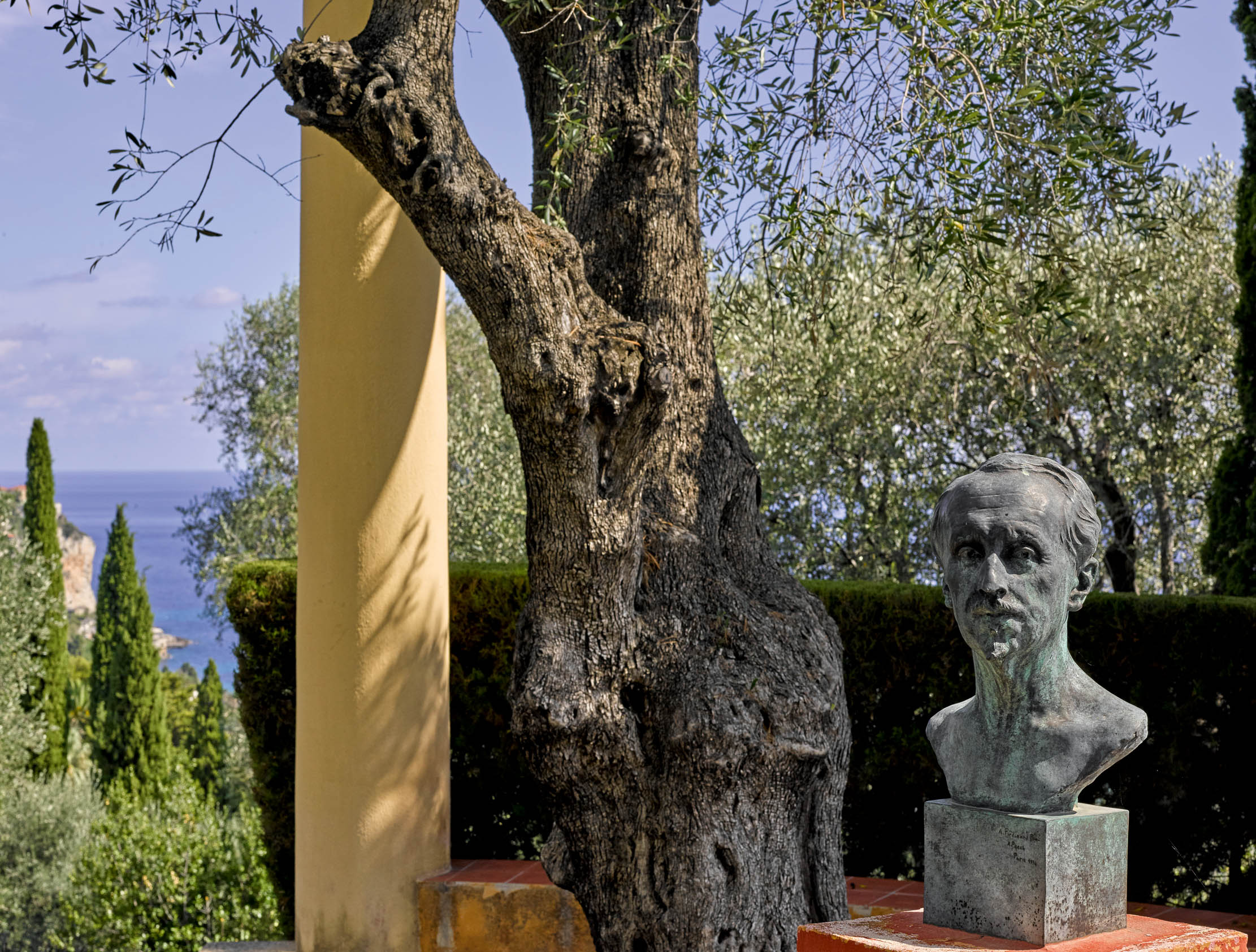
In wartime, Les Colombières was a military hospital and its degradation continued thereafter. Now, thanks to local conservation initiatives in the early 1990s and the property’s purchase in 1995, followed by five years of painstaking restoration by English businessman Michael Likierman and his wife, Margaret, Bac’s house-and-garden masterpiece has been magnificently reinstated.
The Likiermans engaged French landscapers Arnaud Maurièrs and Eric Ossart to oversee the garden’s restoration. ‘We took the garden completely apart and put it all back together again,’ says Mr Likierman. ‘There was not a stone unturned; not a piece of concrete that was not remade. It all had to be done, because it had all been subject to time and neglect.’
Margaret Likierman (who died in 2018) was especially involved in the external works and in rejuvenating the planting. On the garden’s wilder, more forested east side, where the land drops steeply away beneath Orpheus’s cliffside walk, a series of dry-stone-walled terraces was used by growers in Bac’s time to produce cut flowers for the local market. This is also where one of the original colombières (dovecotes) will be found. Margaret replanted the terraces with species from across the world, suited to the hot and dry conditions. Here can be found three young dragon trees (Dracaena draco), Seville oranges, Mexican marigold (Tagetes lemmonii), several Australian bottle trees (Brachychiton spp.), South African clivias, Macronesian aeoniums and much else, in a continuing experimental collection. We see at Les Colombières, therefore, not only an exemplary restoration of a unique property, but a new strand of interest for the garden, at the start of its second century.
Join Country Life on a tour of Les Colombières
The allure of the French Riviera has long been acknowledged by garden enthusiasts throughout the world. British travellers, in particular, have been spellbound by the exotic perfumes and colours, as well as the benign climate, with many settling here to create gardens of distinction.
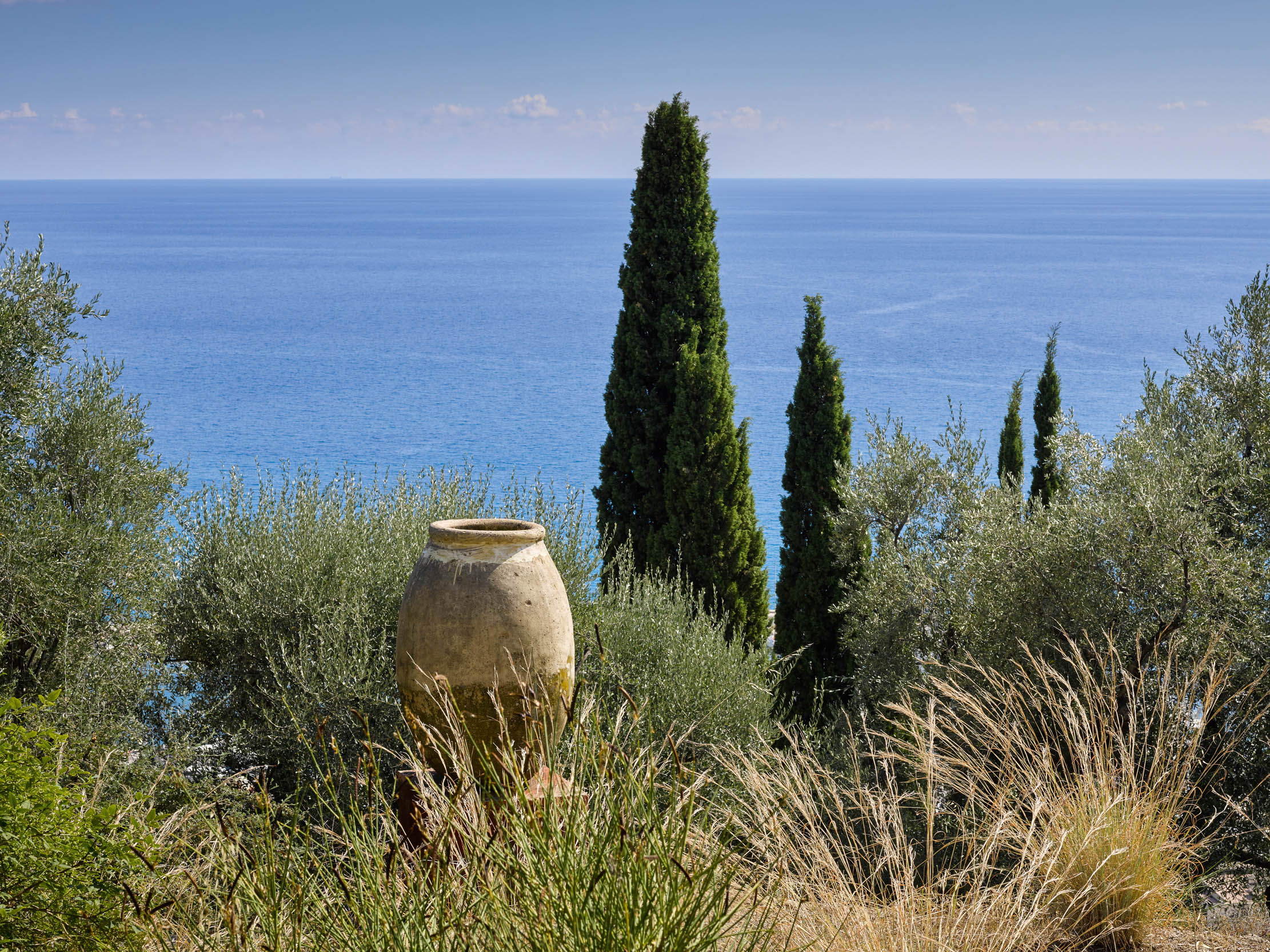
On this exclusive tour, there will be a chance to visit some of these remarkable gardens, such as Les Colombières, Villa Boccanegra and La Serre de la Madone, as well as exciting contemporary masterpieces, including two private gardens designed by James Basson, who will join us for a day to show us his work.
The tour will be hosted by former Country Life Gardens Editor Kathryn Bradley-Hole and led by garden expert Kirsty Fergusson. We will be based in the comfortable Maybourne Riviera, a striking hotel located on the rocky peninsula of Roquebrune-Cap-Martin, for the first two nights, followed by two nights at the Château Saint-Martin, perched in the hilltops of Vence, with splendid panoramic views of the Riviera hinterland.
The tour costs from £5,590, including accommodation, transfers and excursions and flights from Heathrow. For details, contact Boxwood Tours, 1 West Street, Buckingham; 01341 241717; www.boxwoodtours.co.uk

Le Clos du Peyronnet, France: The legendary English Riviera garden of William Waterfield
Charles Quest-Ritson visits the best English garden on the French riviera. Photographs by Claire Takacs.
-
 A Georgian farmhouse that's an 'absolute gem' in an ancient village on Salisbury Plain
A Georgian farmhouse that's an 'absolute gem' in an ancient village on Salisbury PlainJulie Harding takes a look at the beautiful West Farm in a gorgeous Wiltshire village.
-
 Can you guess the landmark from its gingerbread copy cat? Take our quiz
Can you guess the landmark from its gingerbread copy cat? Take our quizToday's quiz takes a detailed look at the gingerbread works on display at London's The Gingerbread City — and asks if you can guess which iconic landmark they are.
